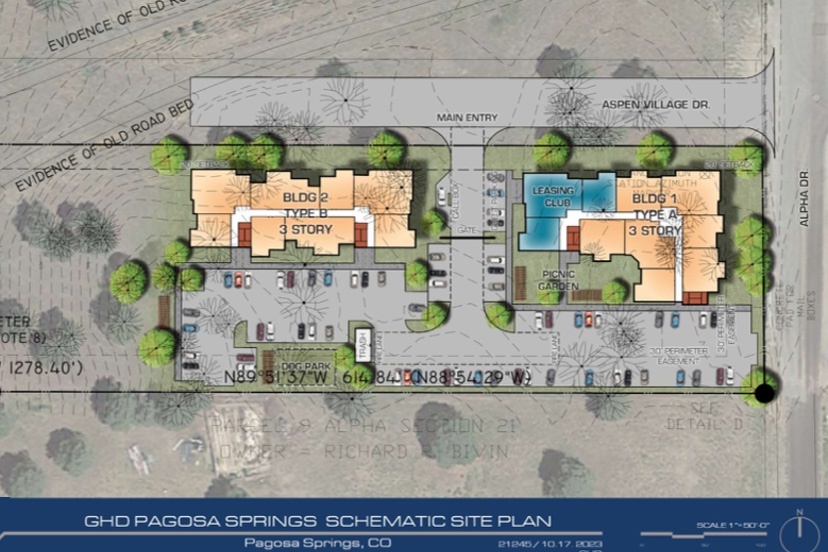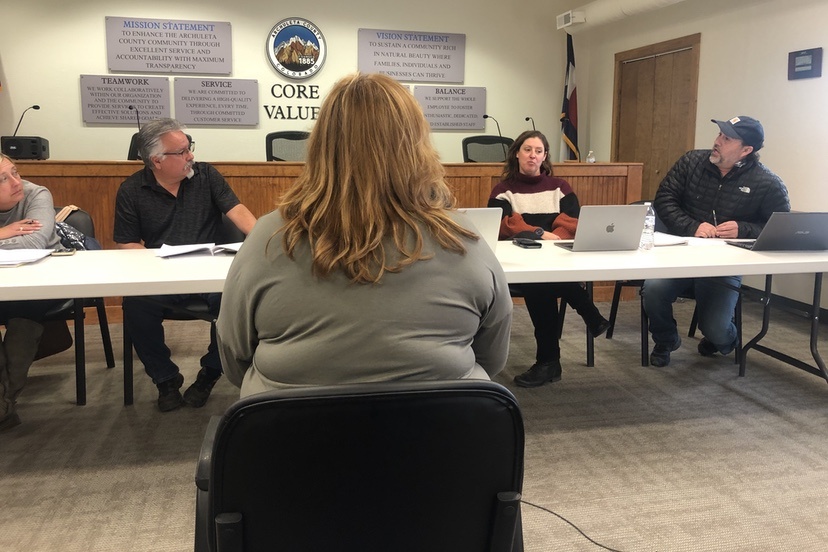A couple of interesting government meetings took place yesterday evening.
Or should I say, one meeting took place… and the other didn’t.
The meeting that didn’t take place, didn’t happen at Town Hall, when only two Town Planning Commission members showed up for what looked like a rather important agenda. Since the Planning Commission has five regular members, they need at least three members to make up a ‘quorum’. Without a quorum, no business can be done, and no decisions can be made, other than to adjourn the meeting and send everyone home.
I went home somewhat disappointed, because the principal item on the agenda was a possible ‘sketch plan’ approval of a proposed LIHTC (Low Income Housing Tax Credit) apartment project near Walmart. The 50-unit project will be — if approved — a significant step forward in addressing our local housing crisis.
A company called Generation Housing Partners LLC has reportedly obtained permission from the Colorado Housing and Finance Authority (CHFA) to build tax-credit apartments at the corner of Alpha Drive and an extension of Aspen Village Drive. Aspen Village Drive runs behind the Walmart Store. The project is proposing 22 one-bedroom apartments, 12 two-bedrooms, and 16 three-bedrooms. It includes a small dog park.
The project is called “The Trails at Pagosa Springs”.

LIHTC projects are typically a collaborative effort between a wealthy investor who benefits from federal tax credits… and a developer who makes a profit building the units… and a management company that makes a profit collecting the rents and maintaining the facilities.
Low Income Housing Tax Credit projects, as the name implies, must serve primarily low income households, of which we have a a significant number here in Pagosa, thanks to the relatively low wages paid by the tourism industry. From the CHFA application:
The Trails at Pagosa Springs will serve families with a household income from 30% to 80% AMI.
The area’s income-restricted projects have zero vacancy and wait-lists ranging from 30 to 130 applicants. The housing crisis in Pagosa Springs is currently one of the town’s most pressing issues. In fact, in 2021, the Town of Pagosa Springs procured a regional housing needs assessment, produced by Root Policy Research. This assessment examined existing housing data, housing plans, and housing needs across a five-county area. This study found that the region requires 152 deeply affordable rental units and over 400 moderately priced affordable units in order to meet existing demand.
Unfortunately, this issue is exacerbated by an influx of permanent, high-income residents, as well as a high number of vacation rental homes becoming permanent residences. Median home prices rose by $150,000 in just year pricing many people out of the market. Workers in the area are forced to live in campgrounds, doubling or tripling up in units and even resorting to living in their cars. The Trails will promote economic mobility by providing more affordable housing options in Pagosa Springs…
According to CHFA documents, a one-bedroom serving a household earning 30% Area Median Income (AMI) must rent for $413 or less per month.
At the 80% AMI level, a three-bedroom unit can rent for $1,529 a month.
As mentioned, this proposal was seeking ‘sketch plan’ approval from the Town Planning Commission last night. But three of the five commissioners failed to show up.
So we will have to wait for a future meeting, to see how our Town Planning Commission feels about this project.
Over on the other side of downtown, on Lewis Street, the Pagosa Springs Area Tourism Board — an advisory board serving both the Town and County governments —had their entire board show up.
Except it wasn’t a full board.
The Town and County wrote up a new agreement late last year that required four of the previous Tourism Board members to resign, so that new members could be chosen. So at the beginning of the meeting, the five remaining members of the nine-person board were interviewing candidates for the four vacant seats.
Those four board seats had four different designations. One seat must be occupied by a person working in the lodging industry. Another seat must represent the Short-Term Rental industry. Another seat must represent the hospitality or restaurant industry. And the fourth seat is “at large” — representing the rest of us. The 90% who don’t own a motel or restaurant or STR company.
It’s not necessarily typical for owners of tourism businesses to focus on the interests of the average full-time residents… as opposed to tourism industry interests.
Nevertheless, after listening to the candidates at last night’s interviews, I feel hopeful about the future of Pagosa tourism. More about that in Part Two.
Several of the nine applicants for the vacant Tourism Board seats brought up the fact that the community, as a whole, has developed a somewhat negative view of the tourism industry.
In particular, a segment of the public has developed a distaste for “Texans”. Or so some of the candidates claimed.
Apparently, the work of the Tourism Board in the near future will be not merely to encourage a growing number of visitors, but also, to educate the general public about the positive aspects of a tourism economy.
Or… is it possible… that we already have more than enough tourists? Can we even entertain that thought?
In Part Two, I will quote some of the comments coming from the winning candidates.

